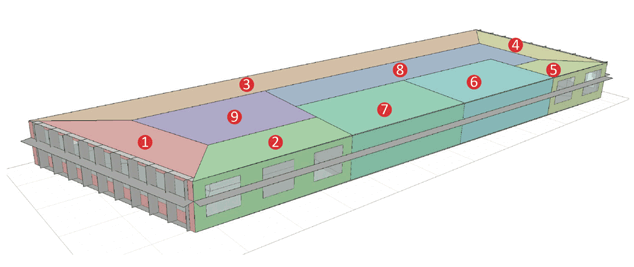ON-DEMAND WEBCAST
Shoebox Energy Modeling: How to Do Quick, Early Simulations Video, 54 minutes
Watch this Premium Content Video!
Join Now - $19.95/moAlready a premium member?
Log in now
Firm or campus member?
Click here
ON-DEMAND WEBCAST
Part 4 of Kjell Anderson's "Early-Design Modeling: New Tools and New Approaches"
Most whole building energy simulations require a mechanical system design, making them unsuitable for early-design modeling. In response, architects and energy modelers are turning to shoebox models, with one or just a few zones.
Why?
Shoebox modeling can help you prevent the really big mistakes that typically happen on the very first day of a project:
- Your intuition and experience tell you that a certain assembly will save the most energy… but your intuition can be wrong.
- You want to use an alternative assembly, but you have no idea if it will save energy compared to other, lower-hanging fruit
- You start putting pencil to paper, unwittingly committing the project to energy schemes that may or may not make sense
- You interpret the client’s program in a way that locks you into major energy expenditures… without ever considering alternatives
By the time you are sizing mechanical systems and debating the finer points of shading mechanisms, you’ve left the big energy-saving opportunities—the ones that cost the least, and maybe save design and construction costs—way behind.
In this webcast, we’ll cover how to conduct shoebox modeling and capture big energy, design, and construction cost savings:
- When and for which applications shoebox models are appropriate
- How to investigate a specific portion of a building to improve local comfort or energy use
- How to exclude the rest of the building from your model
- How to use automated versions of shoebox modeling with reasonable default inputs
- How to perform energy modeling when you don’t have a design developed
- How to start this whole process with very little information.

Multiple case studies from the experts
Our expert panelists, Kjell Anderson of LMN and Heather Holdridge of Lake|Flato, will share multiple case studies discussing how they approach shoebox energy modeling using different software, and for different project types.
- A residential example, showing how quickly you can go through an iterative process testing assemblies, geometry, and more
- A commercial example: How to quickly test different systems to see which ones have the greatest impact and which don’t make as much sense to bother with. A strong daylighting scheme demonstrated 17% energy savings—not a huge surprise—but another design choice demonstrated potential for 14% savings, and significantly lower costs.
- How architects can easily use tools like eQuest, Sefaira, and REMRate to perform these simulations.
Not doing energy modeling yourself? This webcast will familiarize you with concepts that will help you get more out of your energy modeler, whether it is someone on your staff, or an outside consultant.
Related articles
Presenters

Kjell Anderson
AIA, cSBA, LEED AP
LMN Architects
Show bio
A lifelong Washington resident, Kjell Anderson practices architecture at LMN Architects and works with the LMN Tech Studio in Seattle. When he's not designing buildings and simulating energy performance, he spends time with his wife and daughters, plays the violin/fiddle, and is active in local and national sustainability and AIA initiatives.

Heather Gayle Holdridge
LEED AP BD+C, EIT, Associate AIA
Lake|Flato Architects
Show bio
Heather is the Sustainability Manager at Lake|Flato Architects. Leveraging her background in mechanical engineering, Heather directs all Lake|Flato teams in establishing sustainability goals. She establishes strategies and systems to realize those goals under programs such as LEED, the 2030 Challenge, and the Living Building Challenge.
Heather works closely with teams to evaluate passive systems and performs energy modeling throughout the design process. She received a Bachelor of Science in Mechanical Engineering from The University of Texas at Austin and a Master of Business Administration from The University of Texas at San Antonio.

Paula Melton
LEED AP BD+C
BuildingGreen
Show bio
Paula Melton, LEED AP BD+C, is Managing Editor at BuildingGreen, where she writes feature articles, blog posts, and product reviews on a variety of sustainable design topics. With an MFA in creative writing and a background in both journalism and socially responsible marketing, she has been researching and writing about health and sustainability for more than a decade.


